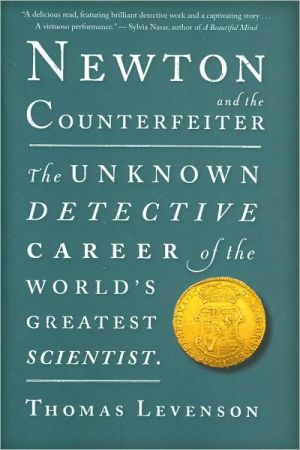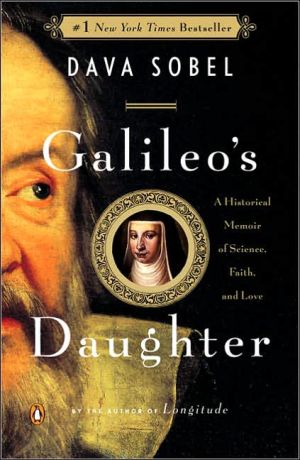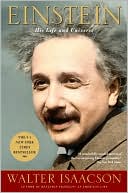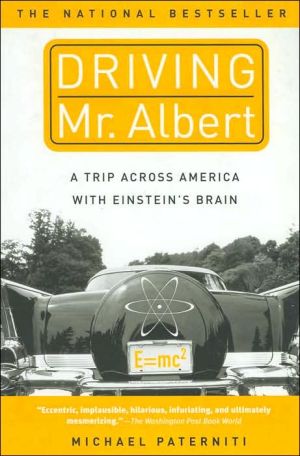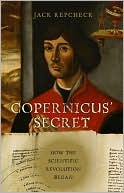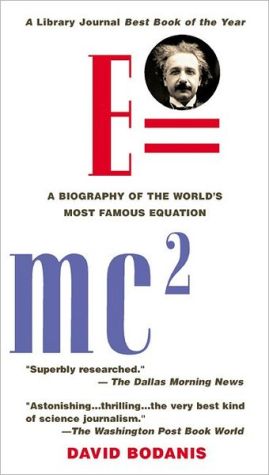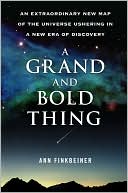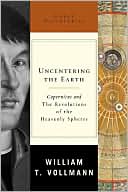Newton and the Counterfeiter: The Unknown Detective Career of the World's Greatest Scientist
In 1695, Isaac Newton—already renowned as the greatest mind of his age—made a surprising career change. He left quiet Cambridge, where he had lived for thirty years and made his earth-shattering discoveries, and moved to London to take up the post of Warden of His Majesty’s Mint. Newton was preceded to the city by a genius of another kind, the budding criminal William Chaloner. Thanks to his preternatural skills as a counterfeiter, Chaloner was rapidly rising in London’s highly competitive...
Search in google:
In 1695, Isaac Newton—already renowned as the greatest mind of his age—made a surprising career change. He left quiet Cambridge, where he had lived for thirty years and made his earth-shattering discoveries, and moved to London to take up the post of Warden of His Majesty’s Mint. Newton was preceded to the city by a genius of another kind, the budding criminal William Chaloner. Thanks to his preternatural skills as a counterfeiter, Chaloner was rapidly rising in London’s highly competitive underworld, at a time when organized law enforcement was all but unknown and money in the modern sense was just coming into being. Then he crossed paths with the formidable new warden. In the courts and streets of London—and amid the tremors of a world being transformed by the ideas Newton himself had set in motion—the chase was on. This revelatory tale of Isaac Newton’s journey through London’s underworld will appeal to fans of The Professor and the Madman. The Barnes & Noble Review Until the ghost of Arthur Conan Doyle provides us with a new adventure concerning Sherlock Holmes and his insidious archnemesis, Professor Moriarty, we shall have to be well content with a work of nonfiction that exhibits all the same Anglophile-satisfying exoticism, narrative brio, intellectual daring, and personality-rich cast: Thomas Levenson s excellent Newton and the Counterfeiter. Scrupulously researched, elegantly presented, illuminatingly insightful, and slyly topical, this narrative centers around the lesser-known period in the life of the genius Sir Isaac Newton. In his late 50s, with his major research and discoveries behind him, having suffered a mind-shattering crisis of faith and friendship, Newton secured the job of warden of the Royal Mint. There, he was rapidly forced to deploy all his wits against a horde of counterfeiters, chief of which was one William Chaloner, as wily a rogue as ever clipped shillings. Deftly supplying historical and sociological details as needed, Levenson begins his tale at Newton s birth, succinctly elaborating the man s character and accomplishments. A parallel track explores the necessarily less well documented life of Chaloner, a charming, hubristic rogue for whom no small amount of pity and understanding is evoked. On an ineluctable collision course, the two titans of probity and rascality go head-to-head in the latter half of the book, cat-and-mousing it to produce all the suspense of any mystery novel. Levenson has chosen an era and set of incidents that carry much relevance to contemporary headlines. Fiscal scams, political intrigues, scientific advances and their cultural impact, wars and shortages, the role of the new media (cheap printing), the torture of dissidents -- all these issues and more, so central to Restoration citizens, still carry immense and significant freight for modern readers. But such admittedly serious issues take a backseat to the thrill of watching Isaac Newton in Sherlockian disguise, meeting informers in a sleazy tavern! --Paul DiFilippo
1\ “Except God”\ JUNE 4, 1661, CAMBRIDGE.\ The tower of Great St. Mary’s catches what daylight remains as a young man passes the town boundaries. He has come about sixty miles, almost certainly on foot (his meticulously kept accounts show no bills paid to livery stables). The journey from rural Lincolnshire to the university has taken him three days. The walls of the colleges shadow Trumpington Street and King’s Way, but at this late hour, Trinity College is closed to visitors.\ The young man sleeps that night at an inn, and the next morning he pays eight pence for the carriage ride to the college. A few minutes later, he passes beneath the Gothic arch of Trinity’s Great Gate and presents himself to college officials for the usual examination. Their scrutiny does not take long. The records of the College of the Holy and Undivided Trinity for June 5, 1661, register that one Isaac Newton has been admitted into its company.\ On its face, Newton’s entrance to Trinity could not have been more ordinary. He must have seemed to be yet another example of a familiar type, a bright farm youth come to university with the aim of rising in the world. This much is true: now nineteen, Newton was indeed country-bred, but by the time he set foot in Trinity’s Great Court it was apparent that he was deeply unsuited for rural life. And he would prove to be a student unlike any the college had ever encountered.\ Nothing in his beginnings suggested any such promise. On Christmas Day, 1642, Hannah Newton gave birth to a son, who was so premature that his nurse recalled that at birth he could fit into a quart jug. The family waited a week to christen him with the name of his father, dead for three months.\ The infant Isaac was at least reasonably well off. His father had left an adequate landholding, including a farm whose owner enjoyed the grand title of Lord of the Manor of Woolsthorpe. For the time being, however, the inheritance fell to baby Isaac’s mother, who was soon able to remarry up. Hannah’s second husband, a local clergyman named Barnabas Smith, had a church living, a considerable estate, and admirable energy for a man of sixty-three; he would produce three children with his new wife over the next eight years. There was, it seemed, no place for an inconvenient toddler in such a vigorous marriage. A little more than two years old, Newton was abandoned to the care of his grandmother.\ Of necessity, the child Newton learned how to live within his own head. Psychoanalysis at a distance of centuries is a fool’s game, but it is a matter of record that, with one possible exception, the adult Newton never permitted himself real emotional dependence on another human being. In the event, his upbringing did not dull his brain. He left his home and village when he was twelve, moving a few miles to the market town of Grantham to begin grammar school. Almost immediately it became obvious that his intelligence was of a different order from that of his classmates. The basic curriculum—Latin and theology—barely troubled him. Contemporaries recalled that when, from time to time, “dull boys were now & then put over him in form,” he simply roused himself briefly “& such was his capacity that he could soon doe it & outstrip them when he pleas’d.”\ In between such interruptions, Newton pleased himself. He drew eagerly, fantastically, covering his rented room with images of “birdes beasts men & ships,” figures that included copied portraits of King Charles I and John Donne. He was fascinated by mechanical inventions, and he was good with tools. He built water mills for his own amusement and dolls’ furniture for the daughter of his landlord. Time fascinated him: he designed and constructed a water clock, and made sundials so accurate that his family and neighbors came to rely on “Isaac’s dials” to measure their days.\ Such glimpses of an eager, practical intelligence come from a handful of anecdotes collected just after Newton’s death, some seventy years after the event. A closer look can be gained in the notebooks he kept, the first surviving one dating to 1659. In tiny handwriting (paper was precious) Newton recorded his thoughts, questions, and ideas. In that earliest volume he wrote down methods to make inks and mix pigments, including “a colour for dead corpes.” He described a technique “to make birds drunk” and how to preserve raw meat (“Immers it in a well stopt vessel under spirits of wine”—with the hopeful postscript “from whose tast perhaps it may be freed by water”). He proposed a perpetual motion machine, along with a dubious remedy for the plague: “Take a good dose of the powder of ripe Ivie berrys. After that the aforesd juice of horse dung.” He became a pack rat of knowledge, filling page after page with a catalogue of more than two thousand nouns: “Anguish. Apoplexie. . . . Bedticke. Bodkin. Boghouse. . . . Statesman. Seducer. . . . Stoick. Sceptick.”\ The notebook contains other lists as well—a phonetic chart of vowel sounds, a table of star positions. Fact upon fact, his own observations, extracts cribbed from other books, his attention swerving from “A remedy for Ague” (it turns on the image of Jesus trembling before the cross) to astronomical observations. The mind emerging on the pages is one that seeks to master all the apparent confusion of the world, to bring order where none was then apparent.\ At sixteen, though, Newton had no idea how to reconcile his abilities to his place in life. An exercise notebook from his school days provides a glimpse of real misery. It is a unique document, the purest expression of despair Newton ever committed to paper. He sorrows for “A little fellow; My poore help.” He asks: “What imployment is he fit for? What is hee good for?”—and offers no answer. He rails, “No man understands me,” and then, at the last, he collapses: “What will become of me. I will make an end. I cannot but weepe. I know not what to do.”\ Newton wept, but his mother demanded her due. If Isaac had exhausted what his schoolmaster could teach him, then it was time to come home and get back to what should have been his life’s work: tending sheep and raising grain.\ Let the record show that Isaac Newton made a miserable farmer. He simply refused to play the part. Sent to market, he and a servant would stable their horses at the Saracen’s Head in Grantham and then Newton would disappear, making a beeline for the cache of books at his former landlord’s house. Or “he would stop by the way between home & Grantham & lye under a hedg studying whilst the man went to town & did the business.” On his own land he paid no more attention to his duties. Instead, he “contrived water wheels and dams” and “many other Hydrostatick experiments which he would often be so intent upon as to forget his dinner.” If his mother gave him orders—to watch the sheep, “or upon any other rural employment”—as often as not Newton ignored her. Rather, “his chief delight was to sit under a tree with a book in his hands.” Meanwhile, the flock wandered off or the pigs nosed into his neighbors’ grain.\ Hannah’s attempt to break Newton to rural harness lasted nine months. He owed his escape to two men: his uncle, a clergyman and a graduate of Cambridge, and his former schoolmaster, William Stokes, who pleaded with Newton’s mother to send her son to university. Hannah relented only when Stokes promised to pay the forty-shilling fee levied on boys born more than a mile from Cambridge.\ Newton wasted no time getting out of town. Although the term would not begin until September, he set out from Woolsthorpe on June 2, 1661. He took almost nothing with him, and on arrival he equipped himself with a washstand, a chamber pot, a quart bottle, and “ink to fille it.” Thus armed, Isaac Newton took up residence in Trinity, where he would remain for thirty-five years.At Cambridge, it was Newton’s ill luck to be poor—or rather, to be made so by Hannah, who again registered her disdain for book learning by limiting his allowance at university to ten pounds a year. That was not enough to cover food, lodging, and tutors’ fees, so Newton entered Trinity as a subsizar—the name Cambridge gave to those students who paid their way by doing the tasks that the sons of richer men would not do for themselves. Having just left a prosperous farm with servants of his own, Newton was now expected to wait on fellow students at table, to eat their scraps, to haul wood for their fires, to empty pots filled with their piss.\ Newton was not the most wretched among his fellow sizars. His ten-pound stipend counted for something, and he had a family connection to a senior member of the college. He could afford at least a few creature comforts. Cherries and marmalade show up in his expenses, as do such essentials as milk and cheese, butter and beer. But in his first years at the college, Newton lived at the very bottom of Trinity’s hierarchy, standing while others sat, a man of no social consequence. He made almost no impression on the undergraduate life there. His entire correspondence contains just one letter to a college contemporary, written in 1669, five years after he completed his B.A. As Richard Westfall, Newton’s leading biographer, has established, even after Newton became by far the most famous of his generation at Cambridge, not one of the students from his year admitted having met him.\ There is no direct evidence to tell what Newton felt as he endured such solitude. But he did leave a powerful hint. In a notebook otherwise filled with expense records and geometry notes, he covered several pages in 1662 with what reads like a debtor’s ledger of sins, entry after entry of transgressions large and small, a reckoning of the burden of debt owed to an unforgiving divine banker.\ He admitted wrongs done to his fellow man: “Stealing cherry cobs from Eduard Storer / Denying that I did so”; “Robbing my mothers box of plums and sugar”; “Calling Derothy Rose a jade.” He revealed an impressive urge to violence: “Punching my sister”; “Striking many”; “Wishing death and hoping it to some”; and in a brutal comment on his mother’s remarriage, “Threatening my father and mother Smith to burne them and the house over them.”\ He admitted to gluttony, twice, and once, “Striving to cheat with a brass halfe crowne”—with hindsight, quite an admission for the man who would become the counterfeiters’ scourge. He confessed to an escalating litany of crimes against God, petty misdemeanors like “Squirting water on Thy day” or “Making pies on Sunday night”; and then an agonized confession of mortal failure: “Not turning nearer to Thee according to my belief”; “Not Loving Thee for Thy self”; “Fearing man above Thee.”\ Worst of all, number twenty on his tally of fifty-eight failings convicted him of “Setting my heart on money learning pleasure more than Thee.” Since the Temptation, money and the delights of the senses have been Satan’s lures for the pious. But for Newton the true danger came from the snare that had captured Eve: an idolatrous love of knowledge. Trinity opened to Newton a world of ideas that had been closed to him in the countryside, and he entered it with ferocious concentration, so deep, it seems, that it drove God from his mind and heart. Even at Cambridge, though, Newton had to find his own way. He recognized quickly that the traditional university curriculum, centered on Aristotle as the ultimate authority, was a waste of his time. His reading notes show that he never bothered to wade all the way through any of the assigned Aristotelian texts. Instead, Newton set himself to master the new knowledge that was trickling into Cambridge past the defenses of ancient authority. He did so mostly on his own—he had to, for his understanding soon surpassed that of all but one or two of the men on the faculty who could have instructed him.\ He began with a glance at Euclid’s geometry, but on first reading found its claims “so easy to understand that he wondered how any body would amuse themselves to write any demonstrations of them.” More mathematics followed, and then he discovered mechanical philosophy—the notion that the entire material world could be understood as patterns of matter in motion. It was a controversial idea, mostly because it seemed, to some at least, to diminish the significance of God in daily life. But even so, Descartes and Galileo—and many others—had demonstrated the effectiveness of the new approach, to the point where the mechanical worldview reached all the way to the few receptive minds to be found in that backwater of European intellectual life, the University of Cambridge.\ Newton’s legendary capacity for study displayed itself here, in this first rush to master all that Europe knew of how the material world works. Sleep was optional. John Wickens, who arrived at Cambridge eighteen months after Newton, remembered that when Newton was immersed in his work, he simply did without. Food was fuel—and, as often as not, merely a distraction. He later told his niece that his cat grew fat on the meals he forgot to eat.\ In 1664, after two hard years, Newton paused to sum up his learning in a document he modestly called Quæstiones quædam Philosophicæ—Certain Philosophical Questions. He started by asking what was the first or most basic form of matter, and in a detailed analysis argued that it had to be those simple, indivisible entities dubbed atoms. He posed questions on the true meaning of position—location in space—and of time, and of the behavior of celestial bodies. He probed his new and temporary master, Descartes, challenging his theory of light, his physics, his ideas about the tides. He sought to grasp how the senses worked. He had purchased a prism at the Sturbridge Fair in 1663, and now wrote up his first optical experiments, the starting point for his analysis of light and color. He wondered about motion and why a falling body falls, though he was confused about the property called gravity. He attempted to understand what it might mean to live in a truly mechanical universe, one in which all of nature except mind and spirit formed a grand and complicated machine—and then he trembled at the fate of God in such a cosmos. He wrote that “tis a contradiction to say ye first matter depends on some other subject.” He added “except God”—and then crossed out those last two words.\ He offered no definitive answers. This was the work of an apprentice mastering his tools. But it is all there in embryo, the program that would lead Newton toward his own discoveries and to the invention of the method that others could use to discover yet more. And while the Newtonian synthesis was decades away from completion, the Quæstiones captures the extraordinary ambition of an anonymous student working on the fringes of the learned world, who nonetheless proclaims his own authority, independent of Aristotle, of Descartes, of anyone.\ Newton was fearless in the pursuit of anything he wanted to know. To find out whether the eye could be tricked into seeing what wasn’t there, he stared directly at the sun through one eye for as long as he could bear the pain, then noted how long it took to free his sight from the “strong phantasie” of the image. A year or so later, when he wanted to understand the effect of the shape of an optical system on the perception of color, he inserted a bodkin—a blunt needle—“betwixt my eye and ye bone as near to ye backside of my eye as I could.” Next, by “pressing my eye wth ye end of it (so as to make ye curvature . . . in my eye)” he saw several “white dark and coloured circles”—patterns that became clearer when he rubbed his eye with the point of his needle. To that description Newton helpfully added a drawing of the experiment, showing how the bodkin deformed his eye. It is impossible to look at the illustration without wincing, but Newton makes no mention of pain, nor any sense of danger. He had a question and the means to answer it. The next step was obvious.\ He pressed on, pondering the nature of air, wondering whether fire could burn in a vacuum, taking notes on the motion of comets, considering the mystery of memory and the strange and paradoxical relationship of the soul to the brain. But, caught up as he was in the whirlwind of new thoughts, new ideas, he still had to deal with the ordinary obstacles of university life. In the spring of 1664, he sat for the one examination required of undergraduates at Cambridge, a test that would determine whether he would become one of Trinity’s scholars. Pass, and he would cease to be a sizar; the college would pay his board and give him a small stipend for the four years it would take to become master of arts. Fail, and it was back to the farm.\ He survived the ordeal, receiving his scholarship on April 28, 1664. But his renewed studies at the college were interrupted within months. Early in 1665, rats turned up on the docks along the Thames which had almost certainly come by way of Holland, perhaps in ships carrying prisoners from the Dutch wars or smuggled bales of cotton from the Continent. The rats carried their own cargo of fleas across the North Sea, and the fleas in turn ferried into England the bacterium Yersinia pestis. The fleas leapt from the rats; they bit; the bacteria slid into human veins, and dark buboes began to sprout. The bubonic plague had returned to England.\ At first the disease proceeded slowly, a troubling backdrop to the daily routine. The first named victim died on April 12 and was buried in haste that same day in Covent Garden. Samuel Pepys noted “Great fears of the Sicknesse” in his diary entry for April 30. But the great naval victory over the Dutch at Lowestoft distracted him and many others. Then, in early June, Pepys found himself, “much against my Will,” walking in Drury Lane, where he saw “two or three houses marked with a red cross upon the doors and ‘Lord have mercy upon us’ writ there.”\ That day, Pepys bought a roll of tobacco to chew, “which took away the apprehension.” But the epidemic had taken hold, and no amount of nicotine could hold back panic. A thousand a week died in London, then two, until by September the death toll reached one thousand each day.\ The very concept of a funeral collapsed under the weight of corpses. The best that could be done was disposal, landfill. As Daniel Defoe described it: A death cart enters a cemetery, halting at a broad pit. A man follows, walking behind the remains of his family. And then, “no sooner was the cart turned round and the bodies shot into the pit promiscuously, which was a surprise to him,” Defoe wrote, “for he at least expected they would have been decently laid in.” Instead, “Sixteen or seventeen bodies; some were wrapt up in linen sheets, some in rags, some little other than naked, or so loose that what covering they had fell from them in the shooting out of the cart, and they fell quite naked among the rest; but the matter was not much to them, or the indecency much to any one else, seeing they were all dead, and were to be huddled together into the common grave of mankind.” This was democracy at last, “for here was no difference made, but poor and rich went together; there was no other way of burials, neither was it possible there should, for coffins were not to be had for the prodigious numbers that fell in such a calamity as this.”\ Those who could fled as fast as possible, but the disease ran with the refugees, and the dread of the plague reached farther and farther into the countryside. Cambridge emptied early, becoming a ghost town by midsummer 1665. The great fair at Sturbridge—England’s largest—was canceled. The university ceased to offer sermons in Great St. Mary’s Church, and on August 7, Trinity College acknowledged the obvious by authorizing the payment of stipends to “all Fellows & Scholars which now go into the Country on occasion of the Pestilence.”\ Newton was already long gone, escaping before the August stipend came due. He retreated to Woolsthorpe, its isolation a sanctuary from any chance encounter with a plague rat or a diseased person. He seems not to have noticed the change of scene. No one now dared set the prodigal to the plow. In the last months before Newton abandoned Cambridge, his mind had turned almost exclusively to mathematics. In the quiet of his home, he continued, building the structure that would ultimately revolutionize the mathematical understanding of change over time. Later in the plague season, he would take the first steps toward his theory of gravity, and thereby toward his understanding of what governs motion throughout the cosmos.\ The disease cut through England all that summer and fall, murdering its tens of thousands. Isaac Newton paid it little mind. He was busy.
\ Justin MoyerA pop-science writer who has made Einstein, acoustics and meteorology intelligible to the right-brained, Levenson transforms inflation and metallurgy into a suspenseful detective story bolstered by an eloquent summary of Newtonian physics and stomach-turning descriptions of prison life in the Tower of London…Newton and the Counterfeiter humanizes a legend, transforming him into a Sherlock Holmes in pursuit of his own private Moriarity.\ —The Washington Post\ \ \ \ \ Library JournalIf your ideas about Isaac Newton revolve around him watching apples falling from trees, writing the Principia, and living the life of a Cambridge don, MIT science professor Levenson's (Einstein in Berlin) book will surprise you. A towering figure in science, Newton also had a passing interest in alchemy, but few people know that he also tracked down counterfeiters as Warden of the Mint and, later, Master of the Mint. Levenson focuses primarily on these years in which Newton outwitted, entrapped, and convicted master counterfeiter William Chaloner. Levenson also details how Newton improved the mint's operation and handled the incredible recoinage of the 1690s that completely replaced the silver coinage in use as England stood on the brink of becoming a world power and developing what we would recognize as the modern banking system. Highly recommended for all collections, required for history of science collections.\ —Michael D. Cramer\ \ \ \ Kirkus ReviewsThe story of how the author of Philosophiae Naturalis Principia Mathematica, who was also an official of the Royal Mint, pursued with Javertian intensity London's most brazen passer of bad coins. Levenson (Science Studies/MIT; Einstein in Berlin, 2003, etc.) demonstrates a surpassing felicity in his brisk treatment of this late-17th-century true-crime adventure. One narrative difficulty is that there's far more documentation about Isaac Newton than about counterfeiter William Chaloner, so the author is forced to rely heavily on an unreliable, anonymous biography of Chaloner published in 1699, not long after its subject was hanged for his crimes. Levenson is careful, however, to remind us continually of that biography's flaws, and he digs out other information on the brash counterfeiter from public records and elsewhere, including Newton's papers. The author cuts back and forth between the careers of his two main characters. We see Newton moving with focused ferocity through a variety of obsessions-the well known (mathematics, physics), the lesser known (alchemy, biblical prophecy) and the least known (his long career at the Mint). The details of Chaloner's career are sketchy, but it's clear he was both extraordinarily clever with mechanical devices and circumspect about his counterfeiting, rarely letting Player A on his team know what Player B was about and rarely getting within convictable range of any damning evidence. Chaloner tried to insinuate himself into the Mint, gave evidence at Parliamentary inquiries as if he were a disinterested authority on coinage, published pamphlets about monetary matters and, at the end, fought desperately and ingeniously for his life against Newton, whohad initially underestimated his quarry. Levenson departs from the strong current of his narrative only when it's necessary to explain a bit of London history or the workings of the legal and financial systems of the day. Swift, agile treatment of a little known but highly entertaining episode in a legendary life. Author tour to New York, Boston, San Francisco. Agent: Theresa Park/Park Literary Group\ \ \ \ \ New Scientist"Levenson's account of this world of criminality, collusion and denunciation is meticulously researched and highly readable...the tale of Newton the economist is one worth telling."\ \ \ \ \ Providence Journal"Newton and the Counterfeiter packs a wonderful punch in its thoroughly surprising revelation of that other Isaac Newton, and in its vivid re-creation of 17th-century London and its fascinating criminal haunts."\ \ \ \ \ The Oregonian"Newton and the Counterfeiter is as finely struck as one of Newton's shillings."\ \ \ \ \ From the Publisher"Levenson reveals the remarkable and true tale of the only criminal investigator who was far, far brainier than even Sherlock Holmes: Sir Isaac Newton during his tenure as Warden of the Royal Mint. What a fascinating saga! It allows us to see the human side of Newton and how his amazing mind worked when dealing with practical rather than theoretical questions.”\ —Walter Isaacson, author of Einstein, His Life and Universe and Benjamin Franklin: An American Life\ “Newton and the Counterfeiter is a wonderful read that reveals a whole new side to a giant of science. Through a page-turning narrative, we witness Isaac Newton's genius grappling with the darker sides of human nature, an all too human journey reflecting his deepest beliefs about the cosmic order. This is a gripping story that enriches our sense of the man who forever changed our view of the universe.”\ —Brian Greene, author of The Fabric of the Cosmos\ \ As the great Newton recedes from us in time, he comes increasingly into focus as a man rather than a myth—thanks in no small measure to this learned and lively new study from the estimable Thomas Levinson.”\ —Timothy Ferris, author of Seeing in the Dark\ \ “Newton and the Counterfeiter is both a fascinating read and a meticulously researched historical document: a combination difficult to achieve and rarely seen . . . Recommended for anyone who wants to know the real story behind this astonishing but largely overlooked chapter of scientific history.”\ —Neal Stephenson, author of Cryptonomicon and Anathem\ \ "I absolutely loved Newton and the Counterfeiter. Deft, witty and exhaustively researched, Levenson's tale illuminates a near-forgotten chapter of Newton's extraordinary life—the cat-and-mouse game that pitted him against a criminal mastermind—and manages not only to add to our knowledge of the great mathematician but to make a page turner out of it. This book rocks."\ —Junot Díaz, author of The Brief Wondrous Life of Oscar Wao\ \ “Newton and the Counterfeiter is a delicious read, featuring brilliant detective work and a captivating story . . . a virtuoso performance.”\ —Sylvia Nasar, author of A Beautiful Mind\ \ "I loved Levenson's book. It's a rollicking account of the fascinating underbelly of seventeenth-century London—and reveals an aspect of Newton I'd scarcely known of before, yet which shaped the world we know. A tour de force."\ —David Bodanis, author of E=MC2\ \ "Levenson's account of this world of criminality, collusion and denunciation is meticulously researched and highly readable...the tale of Newton the economist is one worth telling."—New Scientist\ \ "Levenson demonstrates a surpassing felicity in his brisk treatment of this late-17th-century true-crime adventure...Swift, agile treatment of a little known but highly entertaining episode in a legendary life."\ —Kirkus Reviews\ \ "Highly Reccommended."—Library Journal\ \ "Newton and the Counterfeiter packs a wonderful punch in its thoroughly surprising revelation of that other Isaac Newton, and in its vivid re-creation of 17th-century London and its fascinating criminal haunts."—Providence Journal\ "Newton and the Counterfeiter is as finely struck as one of Newton's shillings."—The Oregonian\ \ "Levenson transforms inflation and metallurgy into a suspenseful detective story bolstered by an eloquent summary of Newtonian physics and stomach-turning descriptions of prison life in the Tower of London...Newton and the Counterfeiter humanizes a legend, transforming him into a Sherlock Holmes in pursuit of his own private Moriarity."—Washington Post\ \ \ \ \ \ The Washington Post"Levenson transforms inflation and metallurgy into a suspenseful detective story bolstered by an eloquent summary of Newtonian physics and stomach-turning descriptions of prison life in the Tower of London...Newton and the Counterfeiter humanizes a legend, transforming him into a Sherlock Holmes in pursuit of his own private Moriarity."\ \ \ \ \ The Barnes & Noble ReviewUntil the ghost of Arthur Conan Doyle provides us with a new adventure concerning Sherlock Holmes and his insidious archnemesis, Professor Moriarty, we shall have to be well content with a work of nonfiction that exhibits all the same Anglophile-satisfying exoticism, narrative brio, intellectual daring, and personality-rich cast: Thomas Levenson's excellent Newton and the Counterfeiter. Scrupulously researched, elegantly presented, illuminatingly insightful, and slyly topical, this narrative centers around the lesser-known period in the life of the genius Sir Isaac Newton. In his late 50s, with his major research and discoveries behind him, having suffered a mind-shattering crisis of faith and friendship, Newton secured the job of warden of the Royal Mint. There, he was rapidly forced to deploy all his wits against a horde of counterfeiters, chief of which was one William Chaloner, as wily a rogue as ever clipped shillings. Deftly supplying historical and sociological details as needed, Levenson begins his tale at Newton's birth, succinctly elaborating the man's character and accomplishments. A parallel track explores the necessarily less well documented life of Chaloner, a charming, hubristic rogue for whom no small amount of pity and understanding is evoked. On an ineluctable collision course, the two titans of probity and rascality go head-to-head in the latter half of the book, cat-and-mousing it to produce all the suspense of any mystery novel. Levenson has chosen an era and set of incidents that carry much relevance to contemporary headlines. Fiscal scams, political intrigues, scientific advances and their cultural impact, wars and shortages, the role of the ?new? media (cheap printing), the torture of dissidents -- all these issues and more, so central to Restoration citizens, still carry immense and significant freight for modern readers. But such admittedly serious issues take a backseat to the thrill of watching Isaac Newton in Sherlockian disguise, meeting informers in a sleazy tavern! --Paul DiFilippo\ \
